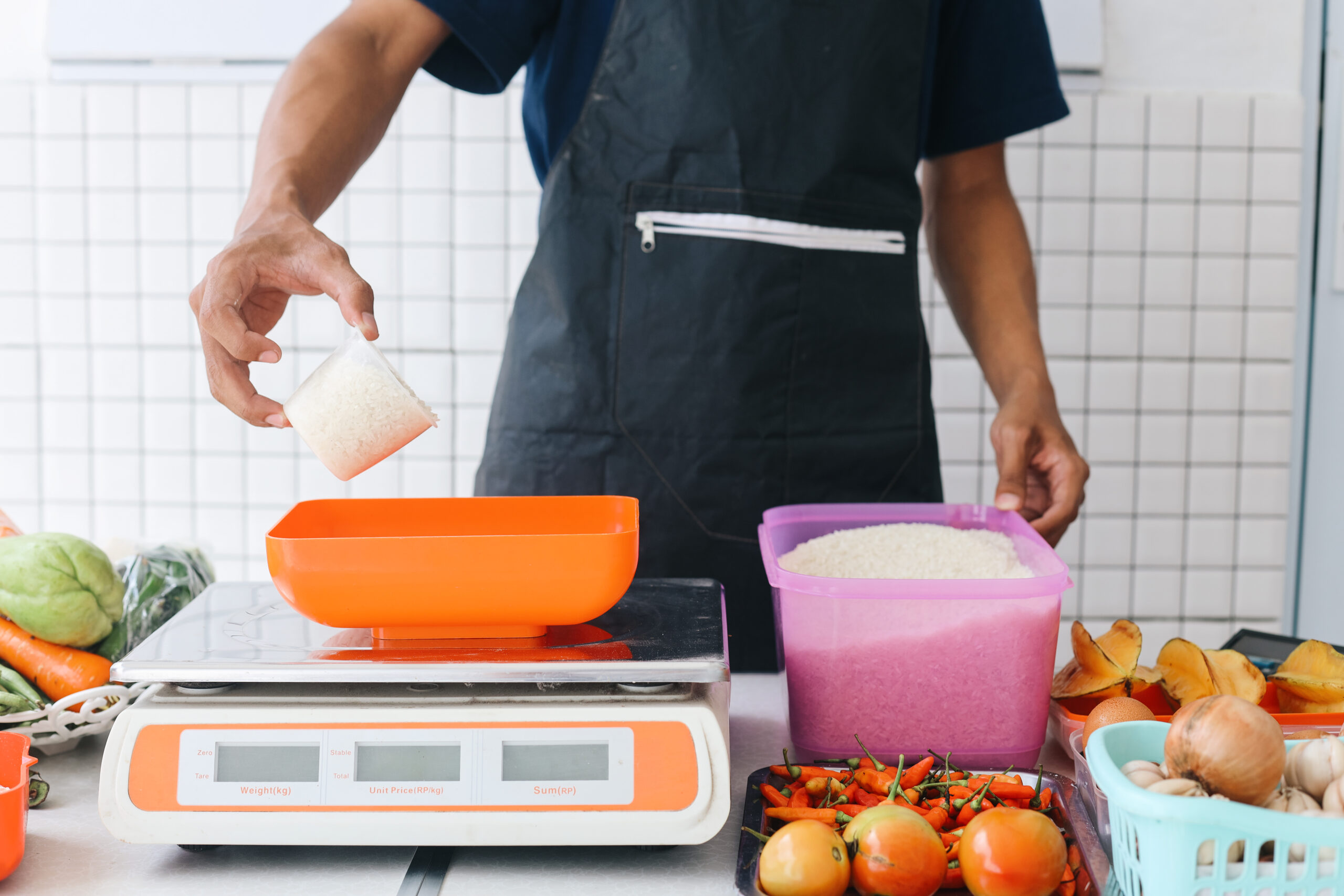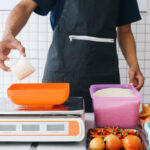No matter what baking recipes you check out, they always list the exact amounts of ingredients. For liquids, you’ll usually see fluid ounces (oz) or milliliters (ml). For solids, it’s usually grams, cups, or occasionally other units like teaspoons (tsp) or tablespoons (tbsp).
Aside from a cup measure, teaspoon, and tablespoon, all other units need a kitchen scale to get the exact measure of ingredients. It’s not recommended to eyeball it since these recipes have been created with a lot of trial and error. If you do, your dish might taste completely different from what it’s supposed to.
Using kitchen scales can get a bit tricky with all the numbers and buttons. So here’s a complete guide to help you out.
How to Use a Kitchen Scale

There are typically 2 types of kitchen scales: digital and analog scales.
Digital scales use electronic sensors to measure weight and display the result on an LCD screen. They generally work on batteries and give you the exact measurement on the screen.
Analog scales are also called mechanical, spring, or balance scales. These don’t need batteries and instead of a screen, they have a needle and a dial to show weight. They’re not as precise as digital scales and can be harder to read if you need very fine measurements.
Here’s how to use both these scales:
How to Use a Digital Food Scale
Step 1: Press the power button. The screen should display “0.”
Step 2: Check your preferred unit of measurement whatever that might be (grams, ounces, milliliter, etc) depending on what your recipe calls for. There should be a button right next to the screen that allows you to do this.
Step 3: If you’re using a heavy bowl, use the tare function to subtract its weight. Or else the scale will show the weight of both the bowl and the ingredients, which won’t be accurate for your recipe. To tare, place the empty bowl on the scale, press the “tare” or “zero” button, and the screen should display 0 with the bowl on it. Do this each time you use the bowl, or keep the same bowl and swap out ingredients. Like this, you’ll have fewer dishes to wash.
Step 4: Add your ingredients to the bowl. Use a spoon to take out or add a bit more if the measurement is not what it’s supposed to be.
How to Use Analog Kitchen Scales
Step 1: Make sure the pointer is set to zero. If it’s not, look for the adjustment knob (it’s usually near the base) and turn it until the dial points to zero.
Step 2: Put your mixing bowl/ measuring bowl or container on the scale, then check where the needle is pointing. If your balance scale does not have a tare function, make a note of the container’s weight. If there’s a tare knob, reset it to zero to minus the weight of the container.
Step 3: Add your ingredients slowly. If you’ve not used the tare function, take the number from what you noted down before and subtract it from the number showing. That will be the weight of the ingredient. Use a spoon to take out or add some more if the number is not what it’s supposed to be.
Step 4: If the needle lands between two numbers, just estimate as best as you can.
Extra Tips for Using Kitchen Scales
If you need to measure something sticky like honey or syrup, put a piece of plastic wrap or parchment paper on the scale before placing your container. That way, you won’t have sticky residue to clean up. But for best results, just use measuring cups or measuring spoons.
Digital scales can sometimes be sensitive to extreme temperatures. If you’ve just taken your scale out of a very cold or hot room, give it a few minutes to adjust to room temperature before you start weighing.
Some digital scales measure milliliters (ml), which can be helpful for liquid ingredients. But remember, ml measures volume, not weight. So for water, it’s accurate, but for other liquids (like oils), the measurement might be slightly off. It’s best to use a measuring cup if your scale doesn’t specify liquid measurements.
Most kitchen scales have a maximum weight limit, usually around 5 kg (about 11 pounds). Do not overload the scale as it can damage it. Check the user manual for its max weight capacity.
If the display of your digital scale begins to dim, you may need to replace the batteries.
Make sure your scale is on a flat, stable surface to ensure accurate readings.
FAQs
How do I know if my kitchen scale is accurate?
Place a small item with a known weight on it. If the reading is off, try calibrating it or replacing the batteries if it’s digital.
Can I weigh liquids on a kitchen scale?
Yes, you can! Just remember, not all liquids weigh the same—so use ml only for water or other liquids with similar density unless your recipe gives you a specific weight in grams or ounces.
What should I do if my digital scale won’t turn on?
First, check the batteries; they may need to be replaced. Also, ensure the battery compartment is free of dust and debris, as this can interfere with the connection. If it still won’t turn on, there may be a bigger issue, and it might be time to contact the manufacturer.
How do I clean my kitchen scale?
For digital scales, gently wipe the surface with a damp cloth. Avoid submerging it or letting water get into any gaps, especially near the buttons. For analog scales, use a dry or slightly damp cloth. Don’t use harsh cleaners.
Can I weigh hot ingredients on a scale?
No, it’s best to avoid this as heat can mess with the sensors. Let hot foods cool down a bit or put them in a heat-safe container first.
Summary
There you are – a simple step-by-step guide on how to use a kitchen scale. If you’re looking for a kitchen scale to measure things like cake flour, sour cream, baking powder, brown sugar, cooked meat, cooking oil, and more, check out the MisterChef Digital Kitchen Scale. With precise measurements, a user-friendly tare function, and a sleek design, it’s the perfect addition to delicious recipes. Shop with us today.







